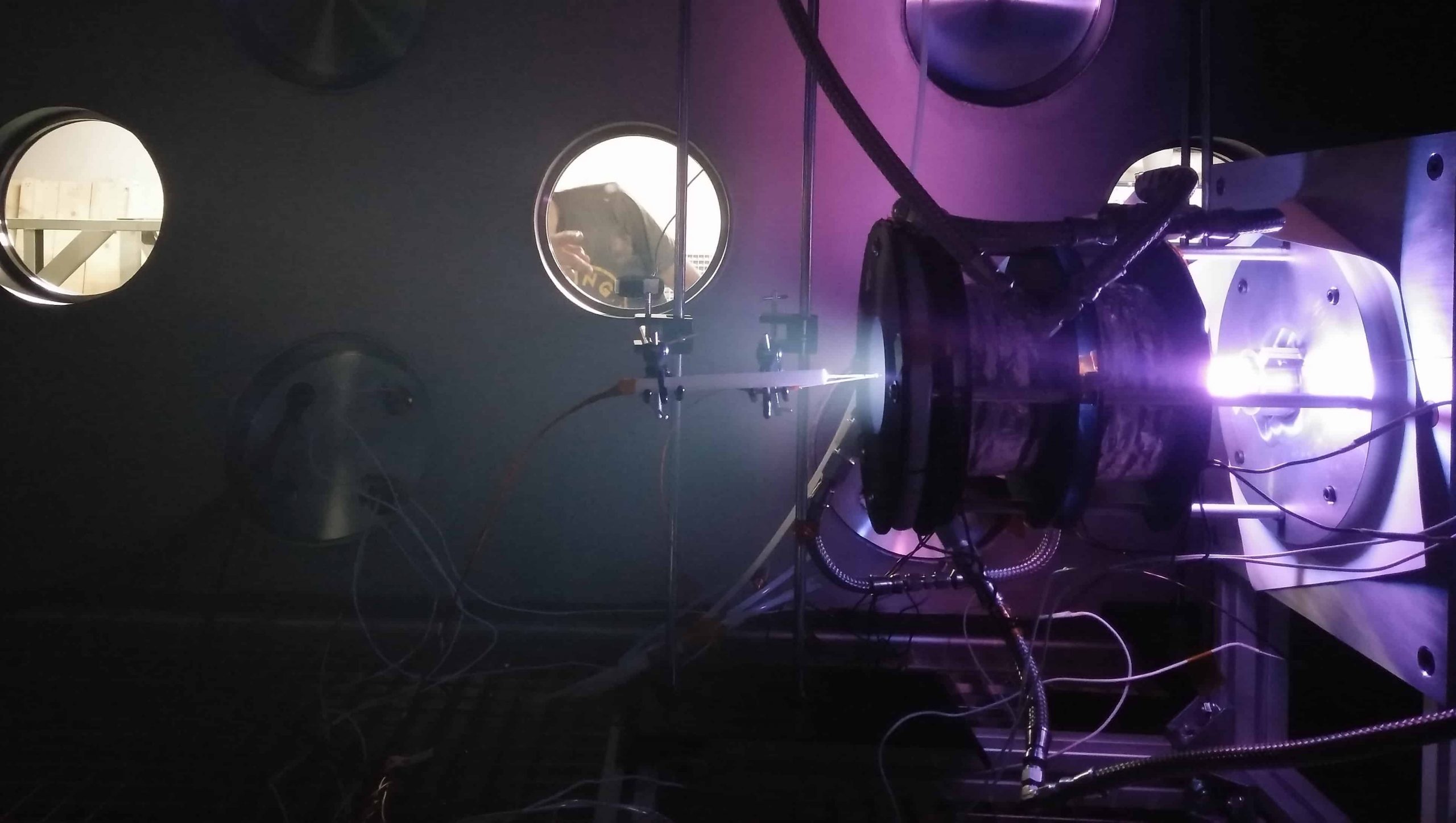
From Fusion to the Stars: Bridging Technologies for Cutting-Edge Space Propulsion
Located few kilometers apart in Madrid, research teams from the Spanish National Fusion Laboratory LNF-CIEMAT and the Aerospace Engineering Department of Universidad Carlos III de Madrid EP2-UC3M successfully joined forces to integrate a fusion breakthrough into space propulsion works. The collaboration involved advanced technology and knowledge related to turbulence and plasma profiles characterization where the expertise of LNF CIEMAT in characterizing turbulence and plasma profiles with high-speed cameras using active gas puffing has been harnessed to advance the understanding and performance of plasma-based space propulsion systems. The origin of this project can be traced back to LNF-CIEMAT, where the technology and knowledge for 2D turbulence and profiles characterization were initially developed for the study of the TJ-II stellarator fusion device.

This technology involved high-speed cameras equipped with triple bundles and active gas puffing and which enables precise examination of the interactions between density, electron temperature, and neutral fluctuations in fusion plasmas. For the purpose of the project, the device has been moved by car from TJ-II room to EP2-UC3M facilities and operated by LNF CIEMAT scientist during the tests while EP2-UC3M experts brought their knowledge in space plasma thrusters.

The collaboration has yielded first remarkable results ! By employing an intensified high-speed camera (200kHz), researchers have managed to visualise turbulence in Helicon thruster plasma emission on a microsecond timescale. Thanks to simultaneous mapping capabilities of density, electron temperature, and neutral dynamics, this breakthrough has led to a deeper understanding of the complex dynamics within plasma-based propulsion systems. The transfer of this fusion-based technology has yielded several improvements for both parties: EP2-UC3M benefited from enhanced research capabilities and a deeper understanding of plasma interactions in space propulsion while LNF-CIEMAT gained recognition for its expertise being applied in a new domain. This collaboration has eloquently showcased how fusion breakthroughs can propel the future of space propulsion into thrilling new frontiers.

